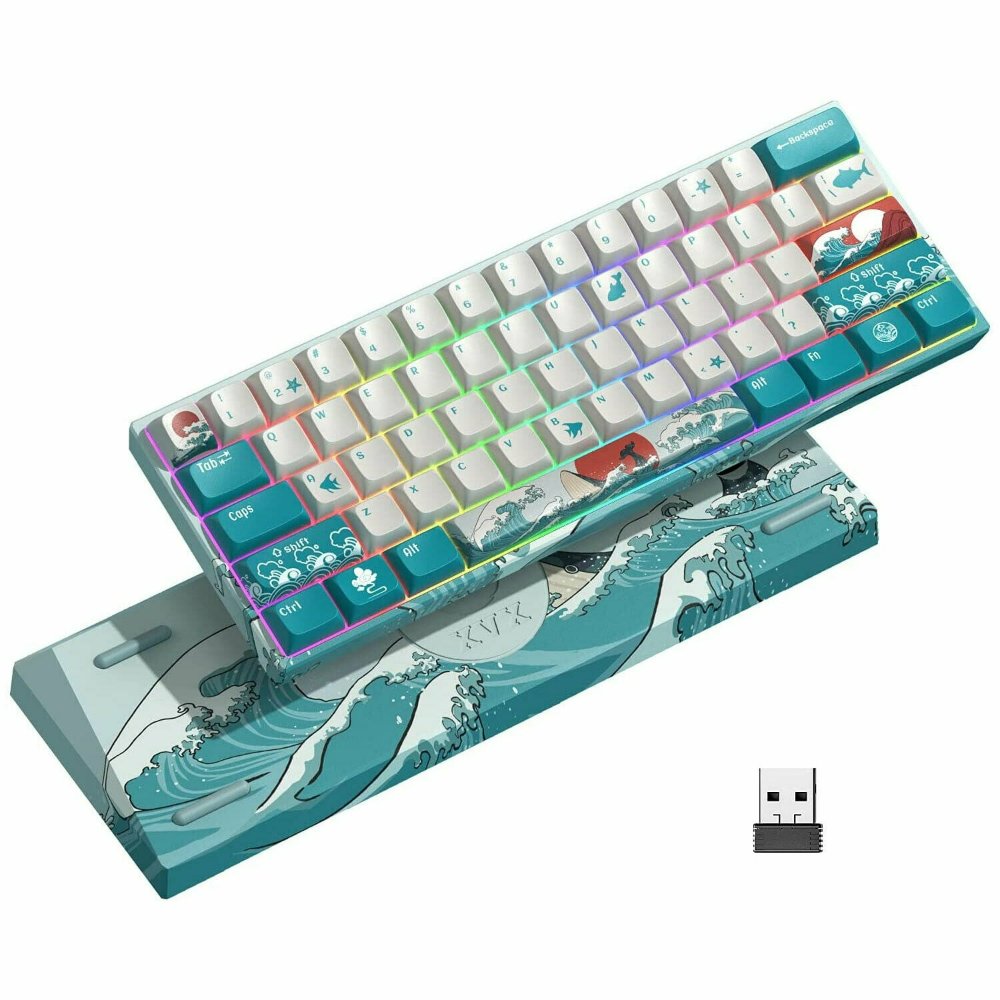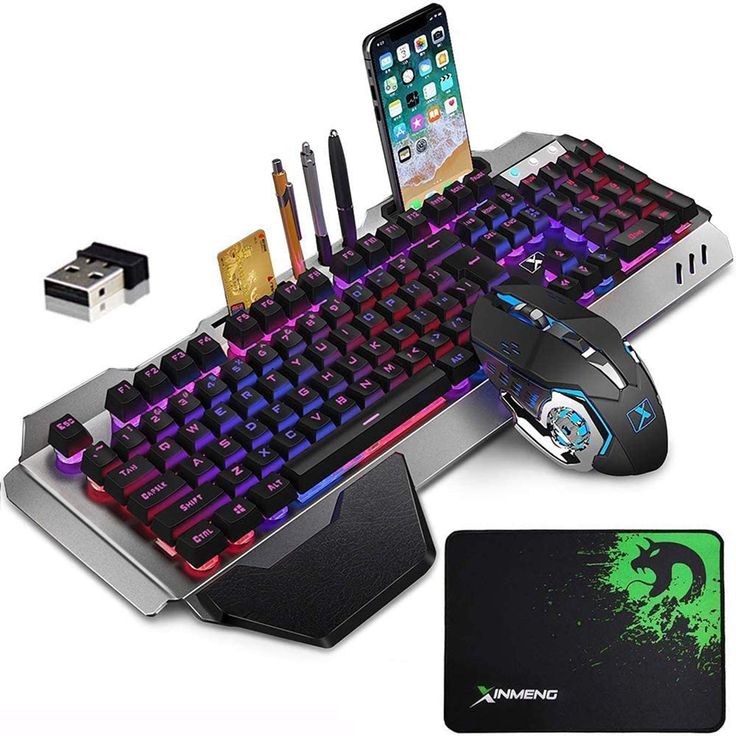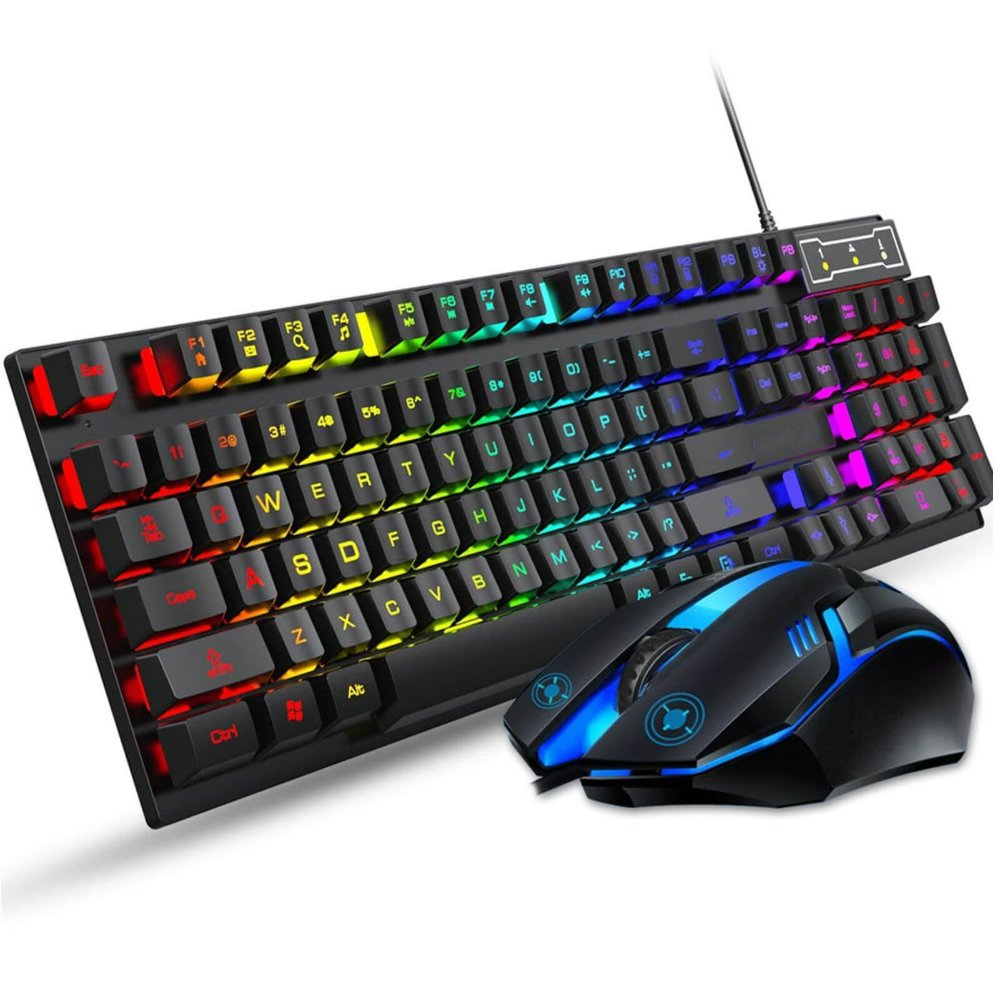Introduction to Mechanical Keyboards
Mechanical keyboards have gained immense popularity among typists, gamers, and computer enthusiasts. But what is a mechanical keyboard exactly? It is a type of keyboard that uses individual mechanical switches for each key. These switches differ from those found in common membrane keyboards. They provide tactile feedback and a distinct clicking sound upon actuation. This feature sets them apart from their quieter counterparts.
Unlike membrane keyboards, which register a keypress through pressure on a silicone dome, mechanical keyboards are more durable and responsive. Each switch in a mechanical keyboard operates independently. It ensures a faster and more precise response to keystrokes. This mechanism is what gives mechanical keyboards their renowned reliability and longevity.
The design of mechanical keyboards also allows for a range of customization options. Users can choose from various switch types to match their preferred typing feel or sound. Additionally, keycaps on a mechanical keyboard are often replaceable, allowing for personalization and aesthetic variety.
For those who spend long hours typing or gaming, the ergonomic benefits of a mechanical keyboard can be significant. The tactile feedback can reduce strain on the fingers, and the audible click can provide a satisfying confirmation of a successfully registered keystroke. This guide will take you through the ins and outs of mechanical keyboards, so you can understand why they may be the right choice for you.

The Anatomy of a Mechanical Keyboard
When demystifying what is a mechanical keyboard, understanding its anatomy is crucial. Each mechanical keyboard consists of several key components that work together to give users a unique typing experience. Let’s explore the fundamental parts that make up the anatomy of these devices.
The first and most essential aspect is the switch. This is the mechanism beneath each key that records keystrokes. Every time a key is pressed, the switch is activated. It sends a signal to the computer to produce a corresponding character on screen. Switches are pivotal in defining the tactile response and noise level.
Keycaps sit atop the switches. They come in various shapes, sizes, and materials. They are what your fingers make contact with when typing. Often, these caps are removable, which provides options for customization in terms of texture and aesthetics.
Beneath the switches is the PCB (Printed Circuit Board). The PCB is like the nervous system of the keyboard. It registers the keystroke when the switch is pressed and communicates it to the computer.
Holding all these components together is the keyboard frame or case. The case not only protects the internal parts but can also contribute to the keyboard’s overall feel and weight.
Lastly, many mechanical keyboards include LED lighting. This feature is not essential for the keyboard’s function, but it adds visibility in low-light conditions. Moreover, it allows for personal expression through customizable color schemes.
The combination of these parts creates the mechanical keyboard’s signature sensory experience — from the way the keys feel under your fingertips to the satisfying click sounds they make. This is what distinguishes them from other types of keyboards and what enthusiasts appreciate. Each component can be tailored to fit personal preferences, which is why understanding the anatomy is key when considering a mechanical keyboard.
Switch Types and Their Characteristics
When discussing what is a mechanical keyboard, the types of switches used are vital to understand. The characteristics of these switches greatly influence the keyboard’s performance and the user’s experience. There are several kinds of switches, but they mainly fall into three categories: clicky, tactile, and linear.
- Clicky switches provide both tactile feedback and a distinctive ‘click’ sound with each keystroke. They are popular among those who enjoy auditory typing confirmation.
- Tactile switches offer a noticeable bump feeling when a key actuates but without the loud click sound. These are preferred by users who like to feel but not hear their keystrokes.
- Linear switches have a smooth keystroke without any tactile bump or click sound. Gamers often favor these as they allow for quick and quiet key presses.
Each switch type is designed for different user preferences. Brands often name these switches with unique terms like Cherry MX Blue, Red, or Brown, which correspond to the clicky, linear, or tactile types.
The actuation force, or the amount of pressure needed to depress a key, varies between switches. For example, heavier switches might provide resistance that helps prevent accidental keystrokes, which can benefit typists who apply more force. Lighter switches might be better for fast typing or gaming, where rapid key presses are common.
Lastly, the durability and lifespan of switches are important. Mechanical switches can often withstand tens of millions of key presses. This is a crucial aspect when considering the longevity of a mechanical keyboard.
Understanding these characteristics will help you navigate your choices and find the keyboard that feels right for you.

Benefits of Using Mechanical Keyboards
Opting for a mechanical keyboard brings a suite of advantages that enhance both performance and comfort. Here are some key benefits of using mechanical keyboards that you might find compelling:
- Improved Typing Experience: The individual switches under each key provide a distinct tactile feel. This makes for a more satisfying and accurate typing experience.
- Durability: Each switch in a mechanical keyboard is built to last. Many can endure tens of millions of keystrokes, ensuring longevity.
- Customization Options: With a range of switch types and replaceable keycaps, you can personalize your keyboard to your liking. This includes both the feel and the look of your typing tool.
- Enhanced Performance: Gamers and typists alike benefit from the responsive switches. It allows for faster and more reliable in-game actions or typing.
- Ergonomic Benefits: The tactile feedback can reduce finger strain. This is especially beneficial for those who type a lot.
- Reduced Typos: The precise switch actuation helps minimize accidental keystrokes. This can improve overall accuracy when typing or gaming.
- Aesthetic Appeal: Mechanical keyboards often come with LED lighting. This adds a personal touch to your workspace and can also help you type in the dark.
These benefits make it clear why mechanical keyboards have become a favorite among computer users. Whether you’re writing a novel or battling in an online game, a mechanical keyboard could be a worthy investment for an improved computer interface experience.
How to Choose the Right Mechanical Keyboard for You
Selecting the ideal mechanical keyboard can seem daunting. Yet, with a little knowledge, you can make an informed choice that matches your preferences and needs. Here’s a step-by-step guide to help you find the perfect companion for your typing or gaming sessions.
- Identify Your Key Use-Case: Are you a gamer, a writer, or do you work in programming? Your primary use will dictate the type of switch and keyboard features you might favor.
- Pick the Switch Type: Deciding between clicky, tactile, or linear switches is pivotal. Consider the environment where you’ll use the keyboard and your noise tolerance.
- Test the Actuation Force: How much pressure you prefer on a key can influence your choice. Some stores have display models to try. Aim for comfort in long sessions.
- Consider the Form Factor: Keyboards come in full-size, tenkeyless, or compact layouts. Think about space on your desk and if you need a number pad.
- Look at Durability: Opt for a keyboard known for its life span. Mechanical switches are robust, but some are rated for more presses than others.
- Customization Options: If you love personalizing, look for keyboards that offer removable keycaps and programmable RGB lighting.
- Ergonomics Are Key: Prioritize keyboards that offer wrist rests or have ergonomic designs. It can make a huge difference to your comfort during use.
- Budget Constraints: Mechanical keyboards range from affordable to high-end. Set a budget and find the best within it, balancing cost with features.
By following these steps, you’ll be well on your way to selecting a mechanical keyboard that’s a joy to use and meets all your demands.

Care and Maintenance Tips for Mechanical Keyboards
Owning a mechanical keyboard means investing in its upkeep for optimal performance and longevity. Here are easy, yet effective tips to maintain your mechanical keyboard.
- Regular Cleaning: Dust and debris can accumulate over time. Gently shake out loose particles. Use a can of compressed air to blow out dust from between the keys.
- Keycap Removal for Deep Cleaning: Pull off the keycaps using a keycap remover tool. Wipe the caps with a damp cloth and mild soap. Let them fully dry before placing them back on.
- Avoid Spills: Liquids and mechanical keyboards don’t mix. Keep drinks away to prevent accidental spills that could lead to damage.
- Soft Handling: Press keys with care. Forceful typing can wear out switches faster. Treat your keyboard gently to extend its life.
- Keep It Dry: Exposure to moisture can corrode internal components. Ensure your hands are dry. Store the keyboard in a low-humidity environment.
- Use a Wrist Rest: This can prevent smudging and reduce hand contact with the keyboard. It also supports ergonomic use during lengthy typing sessions.
- Protective Cover: When not in use, cover your keyboard. This helps keep dust and other contaminants at bay.
By implementing these tips, you can ensure that your mechanical keyboard remains reliable, responsive, and visually appealing for years to come. Regular maintenance not only preserves its functionality but also its aesthetic charm.
Popular Mechanical Keyboard Brands and Models
In the realm of mechanical keyboards, certain brands and models stand out. This is due to their quality, design, and the variety of switch types offered to suit different preferences. Below are some popular brands and their notable mechanical keyboard models:
- Corsair: Known for their gaming peripherals, Corsair’s range includes the K95 RGB Platinum, which boasts customizable lighting and Cherry MX switches.
- Razer: Another giant in the gaming sector, Razer offers models like the BlackWidow Elite, famous for its Razer Green tactile switches.
- Logitech: Catering to both gamers and professionals, Logitech’s G Pro X Keyboard allows users to swap out switches, providing a truly customizable experience.
- Das Keyboard: Geared towards professionals and typists, Das Keyboard offers models like the 4 Professional with Cherry MX Brown switches for a quieter typing experience.
- Ducky: Renowned for their build quality and colorful keycap sets, Ducky presents the One 2 Mini, a compact option loaded with features.
- Anne Pro: Offers wireless flexibility with the Anne Pro 2, which is compact and customizable with Gateron switches.
- Filco: An understated brand favored by purists, Filco’s Majestouch-2 is a solid choice with a variety of Cherry MX switch options.
These brands serve as a great starting point for anyone looking to invest in a mechanical keyboard. Whether for gaming, typing, or general computer use, each brand brings something unique to the table. By familiarizing yourself with these popular options, it becomes easier to discern which mechanical keyboard aligns with your personal or professional needs.
Mechanical Keyboards vs. Membrane Keyboards: A Comparison
When choosing a keyboard, the debate between mechanical and membrane types is critical. Mechanical keyboards, with their switches for each key, offer tactile feedback and audible clicks. Membrane keyboards, using a different technology, offer quieter and softer keypresses.
- Individual Switches vs. Rubber Domes: Mechanical switches operate independently, providing precise feedback. Membrane keyboards use rubber domes, resulting in a mushier feel.
- Durability: Mechanical keyboards are more robust, often lasting tens of millions of keystrokes. Membrane keyboards typically have a shorter lifespan.
- Typing Experience: The clear tactile response of mechanical keyboards can improve typing accuracy. Membrane keyboards may require more forceful typing.
- Customization: Mechanical keyboards allow for customizable keycaps and switches. Membrane keyboards offer limited personalization.
- Sound: Mechanical keyboards often produce a distinct click, while membrane keyboards are quieter, suited for shared workspaces.
- Price: Mechanical keyboards tend to be more expensive, but their longevity can offer better value over time. Membrane keyboards are usually more affordable.
- Maintenance: Cleaning mechanical keyboards is easier due to removable keycaps. Membrane keyboards can be more challenging to maintain and clean.
Through this comparison, it’s evident that each keyboard type has its place. Mechanical keyboards excel in providing a tactile feel and durability suited for heavy users and enthusiasts. Membrane keyboards, on the other hand, offer a budget-friendly and quieter alternative for casual or office use.
